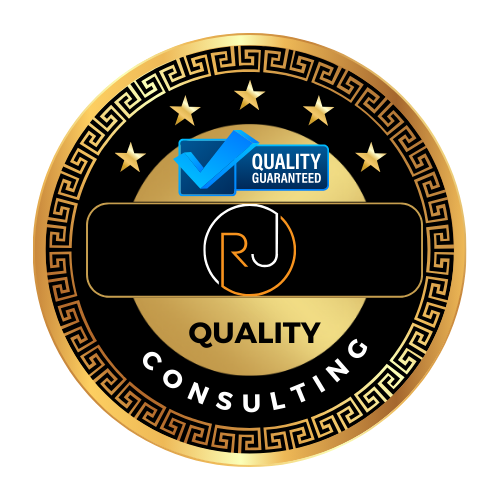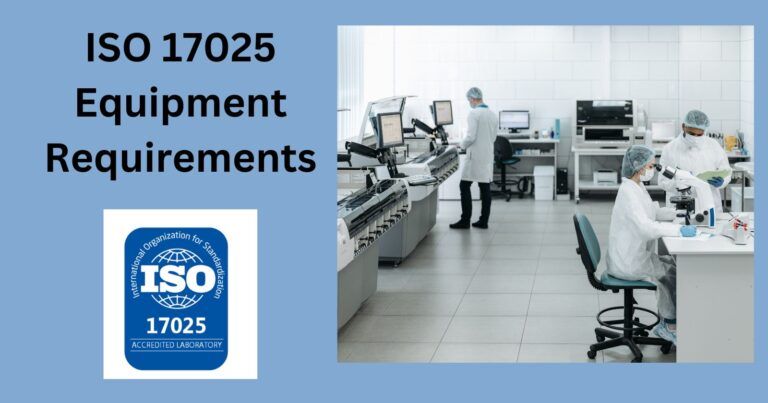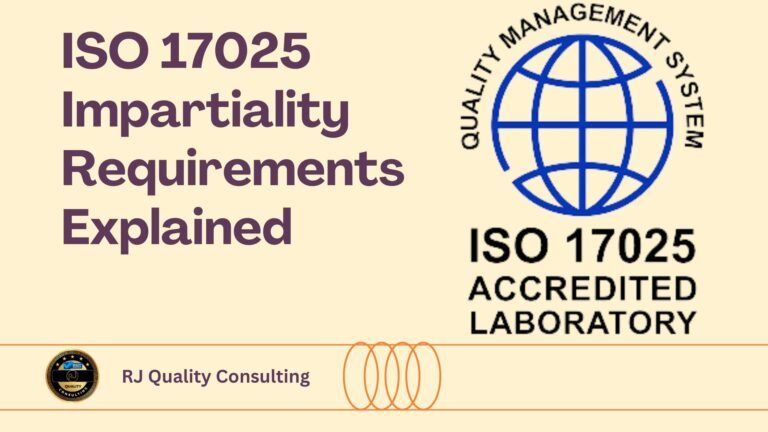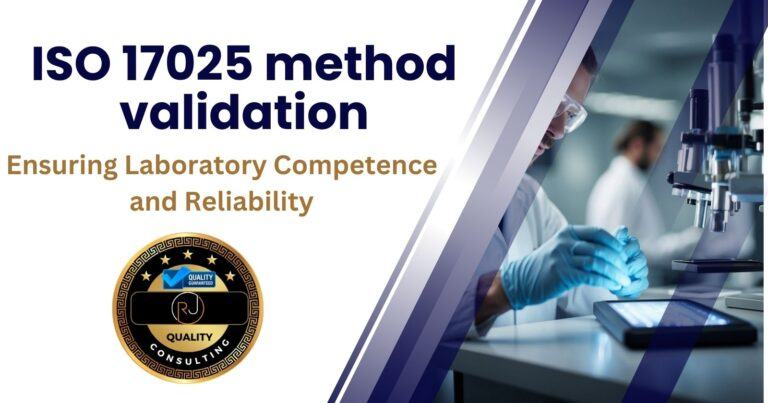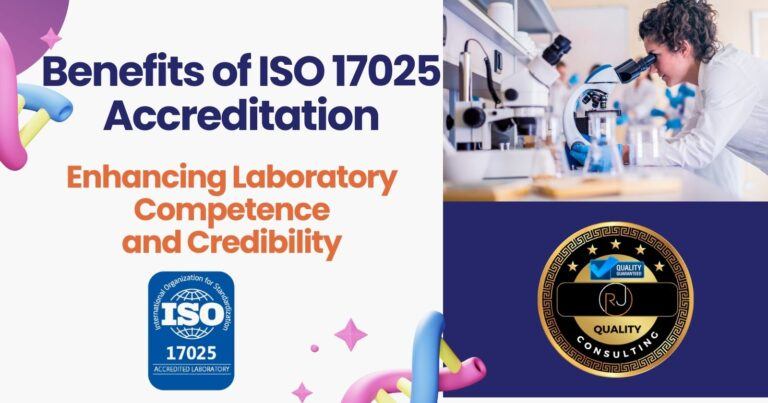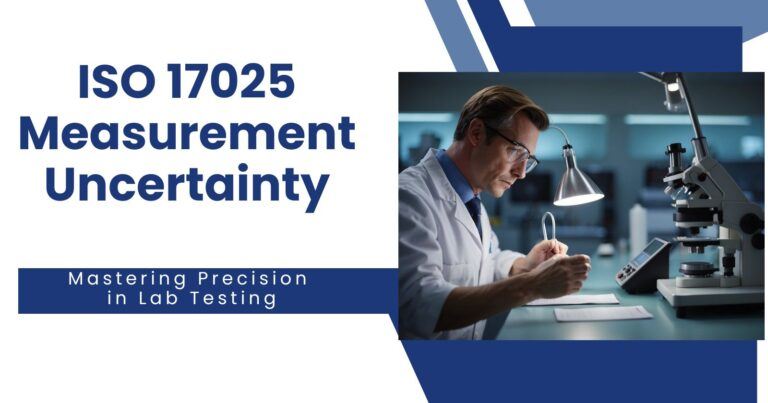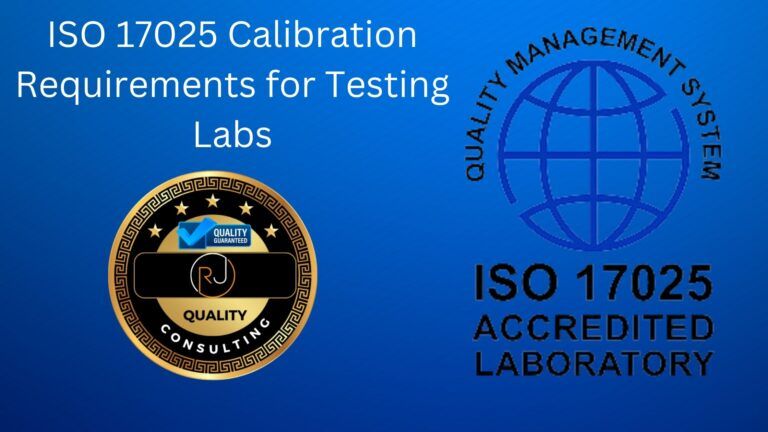ISO 17025 Nonconforming Work: Managing and Correcting Deviations in the Laboratory
In the scope of ISO 17025 nonconforming work is a critical aspect of laboratory quality management that directly affects the credibility and reliability of test and calibration results. ISO 17025 sets the international standard for testing and calibration laboratories, ensuring that they operate competently and are able to generate valid results. Nonconforming work arises when a laboratory’s operations or outcomes fail to match its own protocols or do not meet customer requirements. This can manifest through various channels, such as customer complaints or during internal audits, and demands immediate attention to maintain the integrity of the laboratory’s work and its standing among clients.

Addressing nonconforming work is not just about problem-solving; it’s a comprehensive process that involves evaluating the scope of nonconformity, implementing corrective actions, and taking preventive measures to avoid recurrence. Documentation plays a pivotal role throughout this process, as it provides a traceable record of all actions taken and forms the foundation for continuous improvement. By effectively managing nonconforming work, laboratories not only adhere to the standards set out by ISO 17025 but also fortify trust with their customers, bolstering their reputation and ensuring continued compliance.
Before we dive into key takeaways, watch the following video describing the ISO/IEC 17025 requirements as it relates to clause 7.10 of the ISO/IEC 17025 accreditation standard.
Key Takeaways
- Nonconforming work in ISO 17025 impacts a laboratory’s ability to deliver accurate test and calibration results.
- Effective management of nonconformities involves evaluation, correction, and prevention of future incidents.
- Thorough documentation is essential for tracing corrective actions and underpins ongoing improvements in laboratory quality.
What Is ISO 17025 Nonconforming Work?
In the realm of laboratory accreditation, nonconforming work is a crucial concept you must understand to maintain quality and compliance. Below is a great video created by an accreditation body for ISO 17025. Nothing like getting the scoop from the actual accreditation body that will be auditing you to get your certificate. I actually audit for This company – PJLA. Check it out here. It will tell you all you need to know about ISO 17025 nonconforming work.
Book a FREE 45-Minute Consultation
During the Consultation We Will Give You a Clear Direction and Path For You to Move Forward with Your Certification or Accreditation Goals
Definition and Examples of Nonconforming Work in Laboratory Settings
Nonconforming work refers to any instance where laboratory activities do not adhere to predefined protocols or quality standards. Here are specific examples:
- Environmental nonconformities: When lab conditions exceed specified limits.
- Equipment-related issues: Utilizing instruments that are not in proper working condition for calibration or tests.
- Process deviation: Failure to follow documented work instructions or operational procedures by personnel.
Relevance to ISO 17025:2017, Focusing on Section 7.10
Section 7.10 of ISO/IEC 17025:2017 outlines requirements for handling nonconforming work within your laboratory:
- Identification: It is crucial to recognize and document any deviations.
- Evaluation: Assessing the impact and determining if rework is necessary.
- Containment Actions: Steps to ensure the nonconformity does not affect other work.
- Correction: Correcting the nonconformity and preventing its recurrence.
Adhering to these standards ensures the reliability and credibility of your laboratory’s work.
Identifying ISO 17025 Nonconforming Work

In the context of ISO/IEC 17025, nonconforming work is defined as laboratory testing and calibration that does not adhere to the lab’s own protocols or the requirements agreed upon with the client. Detection of such nonconformities is crucial to maintaining the integrity of laboratory operations.
Strategies and Tools for Detecting Nonconformities
To reliably identify nonconformities, you must systematically apply certain strategies and utilize specialized tools. Ensure regular implementation of the following methods:
- Customer Feedback: Actively seek out and review feedback from your clients on the services provided. This direct line of communication often reveals issues that may not be immediately apparent through internal evaluations.
- Internal Audits: Schedule and conduct regular internal audits to examine all operational areas. These audits will help you to uncover procedural deviations or overlooked nonconformities.
- Quality Control Checks: Routine quality control checks are essential. Incorporate them into your daily activities to ensure ongoing compliance with established protocols. This can include ISO 17025 measurement uncertainty as well.
- Equipment Maintenance and Calibration Records: Regularly review your instrumentation’s maintenance and calibration records. Discrepancies here can indicate potential nonconformities in work output.
By meticulously applying these strategies and integrating them into your standard operating procedures, you establish a robust system for detecting nonconforming work and ensuring continual improvement of laboratory quality systems.
Requirements for Addressing Nonconforming Work

Addressing nonconforming work is critical for maintaining the integrity and reliability of testing and calibration. Your adherence to the ISO/IEC 17025:2017 standard is imperative in this process.
Overview of Policies and Procedures as Per ISO 17025:2017
You must establish and maintain documented policies and procedures that define what constitutes nonconforming work within your organization. The scope of these policies should cover all aspects of testing and calibration that do not meet your established methods or customer requirements. It’s essential that these documents are regularly reviewed and updated to comply with the ISO 17025:2017 standards, ensuring that all nonconforming work is identified, documented, and addressed properly.
Key Responsibilities and Authorities
Clearly define and communicate the responsibilities and authorities for the management and personnel involved in handling nonconforming work. You must:
- Identify who is responsible for deciding the actions regarding nonconforming work.
- Assign the authority to terminate the work when nonconformities are detected.
- Ensure that staff understand their responsibilities and the importance of reporting and addressing nonconformities.
Steps for Immediate Correction and Prevention
When a nonconformity arises, take immediate correction actions:
- Isolate the nonconforming work to prevent its unintended use or delivery.
- Evaluate the significance of the nonconformance and potential impact on the results.
- Decide on the necessary actions to rectify the problem, which may involve rework or discard of the results.
For prevention, implement these steps:
- Establish a feedback mechanism to determine the cause of nonconformities.
- Update procedures or provide additional training if systemic issues are discovered.
- Review the corrected actions to confirm that they have effectively prevented recurrence.
The Process of Evaluation and Correction

When addressing nonconforming work under ISO 17025, you follow a structured process to evaluate and correct the deviation. This ensures the integrity and reliability of your laboratory’s results.
Immediate Actions Upon Detection
Upon detecting nonconforming work, you must take immediate containment actions to prevent any further use or processing of the affected tests or calibrations. This could mean:
- Halting current testing or calibration: Stop any processes that could be compromised.
- Isolation of affected results: Secure and mark any results or reports that are potentially impacted to prevent their release or use.
- Initial assessment: Perform a quick assessment to determine the scope and impact of the nonconformity.
Notification and Recall Protocols
Notifying relevant parties is a critical step in the process. You should:
- Inform internal personnel: Make sure staff members who are involved or affected by the nonconformity are aware and understand the nature and extent of the issue.
- Contact customers: If any nonconforming work impacts customer results, notify them promptly and provide clear instructions, if a recall of results is necessary.
Remember, transparent communication is crucial for maintaining trust and upholding the standards of ISO 17025.
Corrective Actions and Improvement

When you encounter nonconforming work under ISO/IEC 17025:2017, it’s crucial to understand the corrective actions and improvement strategies that are available to you. Your ability to investigate, implement, and prevent will determine the effectiveness of the quality management system.
Processes for Investigating the Root Causes of Nonconformities
Each nonconformity in your laboratory’s work processes requires thorough investigation. You need to define who is responsible for managing nonconforming work and what actions they must take. Risk levels inform these tasks and guide whether work halts, repeats, or if reports are withheld.
- Responsibilities: Clearly outline and define them.
- Risk Assessment: Base actions on assessed risk levels.
Strategies for Implementing Corrective Actions
Implementing corrective actions is a selective process. Not every nonconformance needs corrective action. Each correction should control and address the immediate issue at hand. Should corrective actions be deemed necessary, a risk-based approach informs the actions taken.
- Correction Application: Apply to each nonconformance.
- Corrective Action Necessity: Assess whether it’s required on a risk basis.
Refer to section 7.10.3 of ISO/IEC 17025:2017. This is the part of nonconforming work that determines, along with risk-based thinking, when you should elevate nonconforming work to corrective action.
7.10.3 Where the evaluation indicates that the nonconforming work could recur, or that there is doubt
about the conformity of the laboratory’s operations with its own management system, the laboratory
shall implement corrective action.
So, in other words, the main difference between nonconforming work and corrective action is that if there is a risk that the nonconforming work could recur, or if there is doubt about the lab’s operations with its own QMS, then it should be escalated to corrective action.
Continuous Improvement and Prevention of Recurrence
The key to preventing nonconformity recurrence lies in continuous improvement. After you’ve taken corrective action, you must review its effectiveness. Monitoring the results helps determine whether these actions have successfully improved your processes or services. It is imperative to ensure the nonconformity does not happen again.
- Review: Determine the effectiveness of actions taken.
- Monitor: Keep an ongoing check on action outcomes.
Documentation and Record Keeping

Proper documentation and record keeping are critical for managing nonconforming work within ISO 17025 accredited entities, ensuring traceability and accountability.
Importance of Maintaining Records of Nonconforming Work
Maintaining records of nonconforming work is crucial as it allows you to track back through your processes, identify recurring issues, and implement corrective actions. These records serve as evidence that you are actively monitoring the quality of your work and striving for continual improvement, which is a fundamental aspect of the ISO 17025 standard.
- Traceability: Records provide a historical account of what happened, when, and how.
- Accountability: Clearly documented records identify involved parties and their responsibilities.
- Quality Assurance: They are essential for analyzing the nonconformities and preventing their recurrence.
Details to Be Included in Documentation
Your documentation should provide a comprehensive overview of each nonconformance incident. It should include, but not be limited to, the following details:
- Description of the Nonconformance: A clear description of how the work did not meet required standards or customer expectations.
- Identification of Affected Outputs: A list of all tests, calibrations, or services affected by the nonconformance.
- Actions Taken: Records of immediate actions taken to remedy the situation, including stops in operation or product recalls.
- Root Cause Analysis: A summary of the investigation into the cause of the nonconformity.
- Corrective Actions: Detailed descriptions of the long-term actions implemented to prevent recurrence.
- Responsible Parties: Identification of staff assigned to correct and prevent the issue from recurring.
Ensure all entries in the documentation are date and time stamped and have a clear chain of custody to maintain the integrity of the records.
Conclusion

When addressing nonconforming work in relation to ISO/IEC 17025, it’s crucial for your laboratory to implement a robust process for identifying, documenting, and correcting any deviations from standard protocols. This ensures the integrity of your laboratory’s testing and calibration results. Nonconformities can arise from various factors such as equipment malfunctions, process errors, or human factors, and your response must be proportionate to the impact and risk involved.
Your action plan should include:
- Identification: Prompt detection of nonconformities.
- Documentation: A clear record of the nonconformity and subsequent actions.
- Evaluation: Determination of the cause and impact on results.
- Correction: Immediate actions to rectify the issue.
- Corrective actions: Long-term solutions to prevent recurrence.
- Follow-up: Monitoring to ensure effectiveness of corrective actions.
Remember that nonconformance management is an opportunity for continuous improvement. By addressing and rectifying issues, you not only comply with the requirements of ISO/IEC 17025, but also demonstrate a commitment to quality and reliability in your laboratory services. Properly managed nonconforming work, along with ISO 17025 risk management, strengthens your laboratory’s credibility and contributes to maintaining the confidence of your clients and stakeholders.
Frequently Asked Questions

In this section, you’ll find concise answers to common queries about managing nonconforming work under the ISO/IEC 17025 standard.
What are the essential steps to handle nonconforming work in a laboratory as per ISO 17025?
When nonconforming work is identified in your laboratory, ISO 17025 requires you to take immediate actions to control and correct it. You must document the nonconformity, evaluate the significance, implement any necessary containment actions, and decide on the disposition of the affected results or products.
Can you provide examples of nonconformance in laboratory operations?
Examples of nonconformance include using expired reagents, calibration errors, or deviations from standard operating procedures that could compromise test results. Nonconformances can also stem from equipment malfunctions or human errors during testing or calibration processes.
What does ISO 17025:2017 clause 7.7 specify about dealing with nonconformities?
Clause 7.7 of ISO 17025:2017 specifies the requirements for your laboratory to deal with nonconformities, encompassing actions to control and correct the nonconforming work and to handle the consequences, including informing the affected customers.
What are the general requirements for addressing nonconforming test and calibration items?
ISO 17025 mandates that you must identify, document, and evaluate nonconformities. You should also review and authorize decisions about the suitability of nonconforming work, which may include a retest or recalibration, notifying the customer, or tailoring future work processes to prevent recurrence.
How does effective management of nonconforming work contribute to maintaining laboratory accreditation?
Effective management ensures that your laboratory’s findings remain reliable and credible, which is crucial for maintaining accreditation. It demonstrates your commitment to quality and continual improvement, critical factors for accreditation bodies assessing your laboratory’s competence.
Could you outline the procedures for documentation and reporting nonconforming work in accordance with ISO 17025?
Documentation procedures involve recording the details of the nonconformity, the results of the investigation, and the actions taken to correct and prevent a recurrence. This documentation is critical for quality assurance purposes, auditing, and for informing relevant stakeholders, including customers and accreditation bodies.
